Table of Contents
This document provides advice on effectively prioritizing technical debt in a development team. Technical debt is an issue that all development teams face, and prioritizing it cannot be easy.
It’s not just about implementing a Technical Debt Prioritization Framework:
- Code Knowledge. How are you familiar with the code?
- Severity. How it affects the software’s functionality or performance?
- Dependency and Scale. How many components depend on that part of the code? The scale of impacted software architecture.
- Cost of Fixing. How many story points would it cost to fix the technical debt issue?
Total Score = (Knowledge + Severity + Dependency) – 3 * Cost
This guide provides a step-by-step process for integrating technical debt prioritization into your sprint planning routine, avoiding bias with estimations, customizing the prioritization framework for your team, regularly reviewing and updating the technical debt backlog, and getting buy-in from the product manager and stakeholders.
By following these steps, you can ensure that technical debt is addressed alongside other user stories and tasks and prevent technical debt from accumulating over time.
More details about the Technical Debt Prioritization Framework at the dedicated article.
Try the template with a Free Ducalis account: [SignUp]
Tip 1: Avoid bias with estimations
When prioritizing technical debt, it’s easy to overestimate, undervalue, and be influenced by each other’s opinions. The best solution is to use Evaluation Poker.
Evaluation Poker reduces bias while estimating backlog items. With this method, each team member can score each item without being influenced by others. Doing it asynchronously gives each team member time to think without the pressure of time.
Step 1: Create a new board
To create a new Ducalis board for prioritizing technical debt, use the “Technical Debt Prioritization Template” or access the template gallery.
Step 2: Sync your tech debt backlog with Ducalis
It’s easy prioritizing technical debt backlog is to syncing your task tracker with Ducalis.io. This platform supports Jira Cloud, Jira Server, Asana, ClickUp, Trello, Linear, Github, YouTrack, and Zapier.
Set a filter based on your tech debt property in the task tracker, and all issues will appear in Ducalis in real-time and stay up to date.
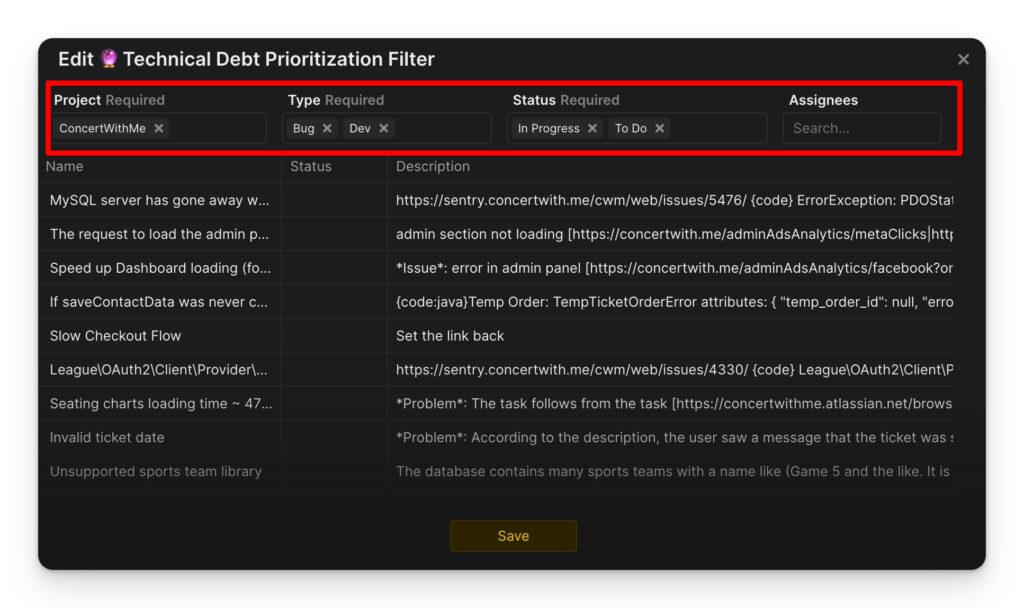
Step 3: Setup an Evaluation poker
Evaluation Poker can assist in reducing bias when estimating your technical debt backlog.
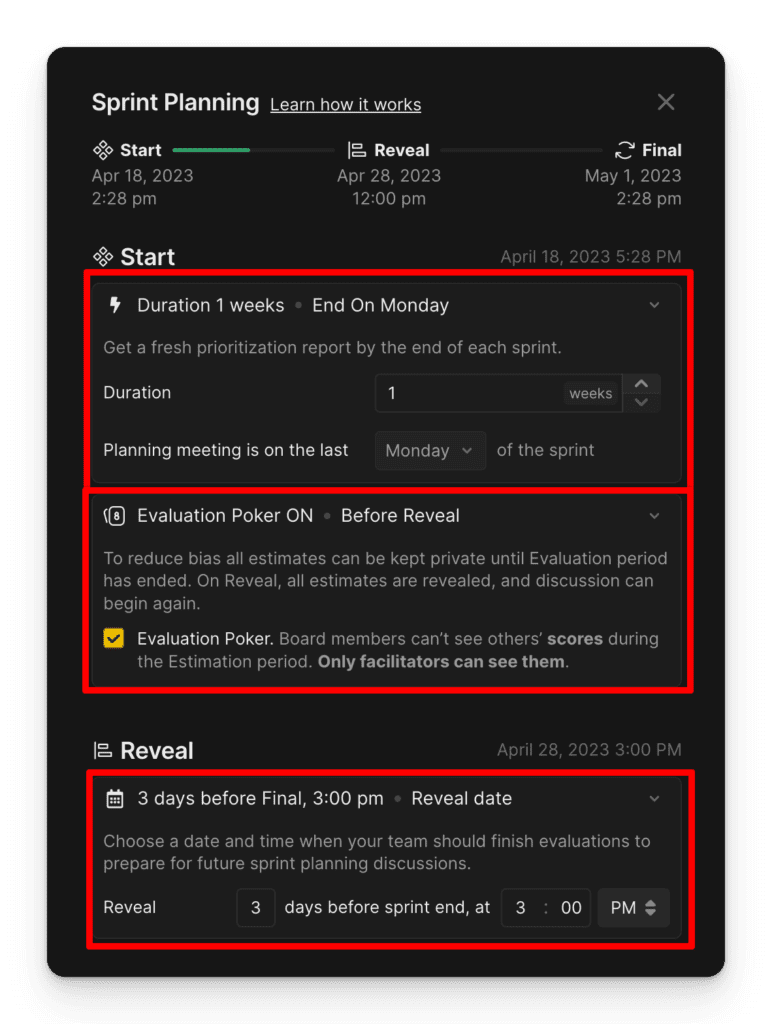
Using this mode, each teammate cannot see other team members’ estimation scores until the reveal moment. This approach allows each teammate to:
- Avoid influencing others’ opinions.
- Take time to think about each backlog item.
- Carefully evaluate each combination of issues and criteria.
Remember to restrict updates to the final priority score after the reveal moment.

Learn more about evaluation poker settings.
Tip 2. Always customize the prioritization framework for YOUR team
Step 1. Customize Criteria
Remember that the best criteria descriptions are the most understandable for your teammates. The more specific your criteria and scale description, the better results prioritizing technical debt process will be. Be sure to specify sprint durations, explanations of dependencies, definitions of blockers, and the meaning of code knowledge.
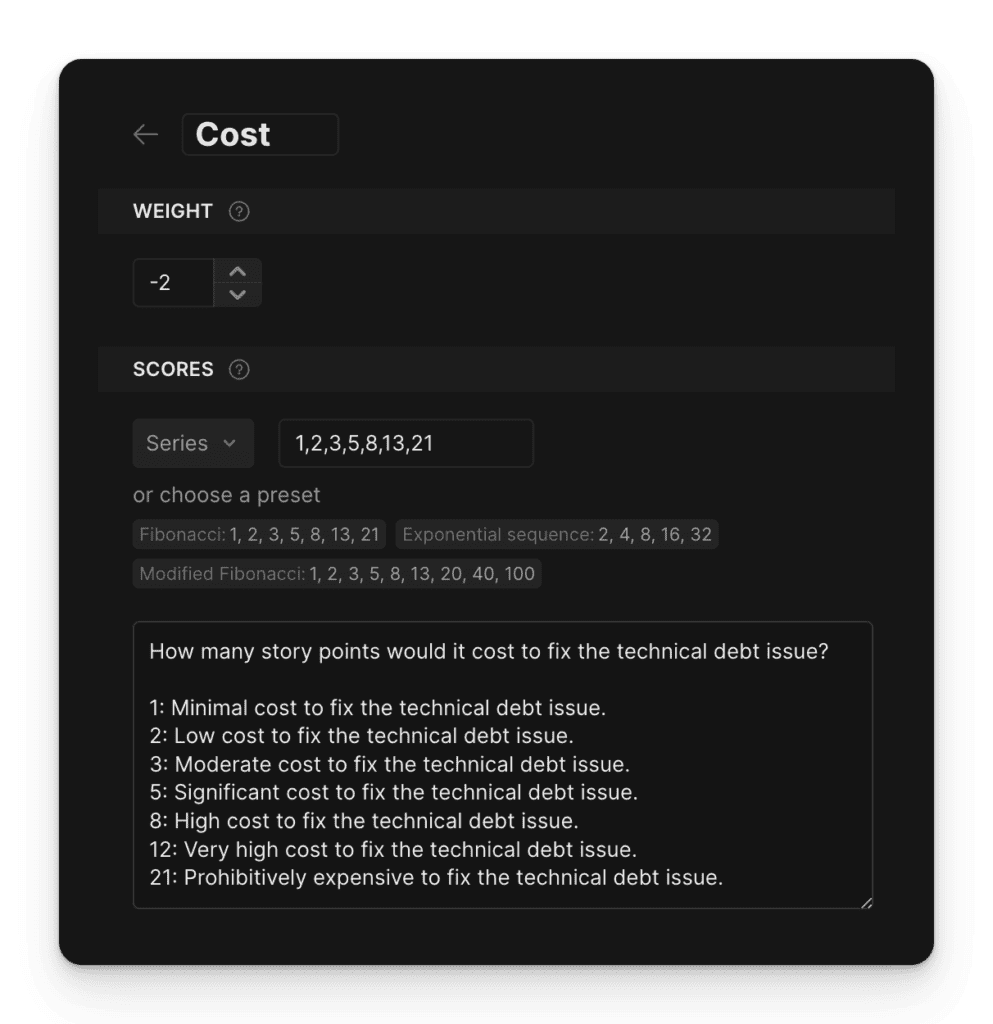
Ensure that you and your teammates are on the same page regarding definitions and evaluation scales.
Read more about Criteria Description Editing.
Step 2. Assignee Criteria to specific team members
When managing technical debt, it is common to have multiple components of your infrastructure involved. For example, you may have four areas to maintain: back-end, front-end, DevOps, and security. However, the framework template only has one definition of cost. To avoid confusion, duplicate this criterion and assign it to specific team members.
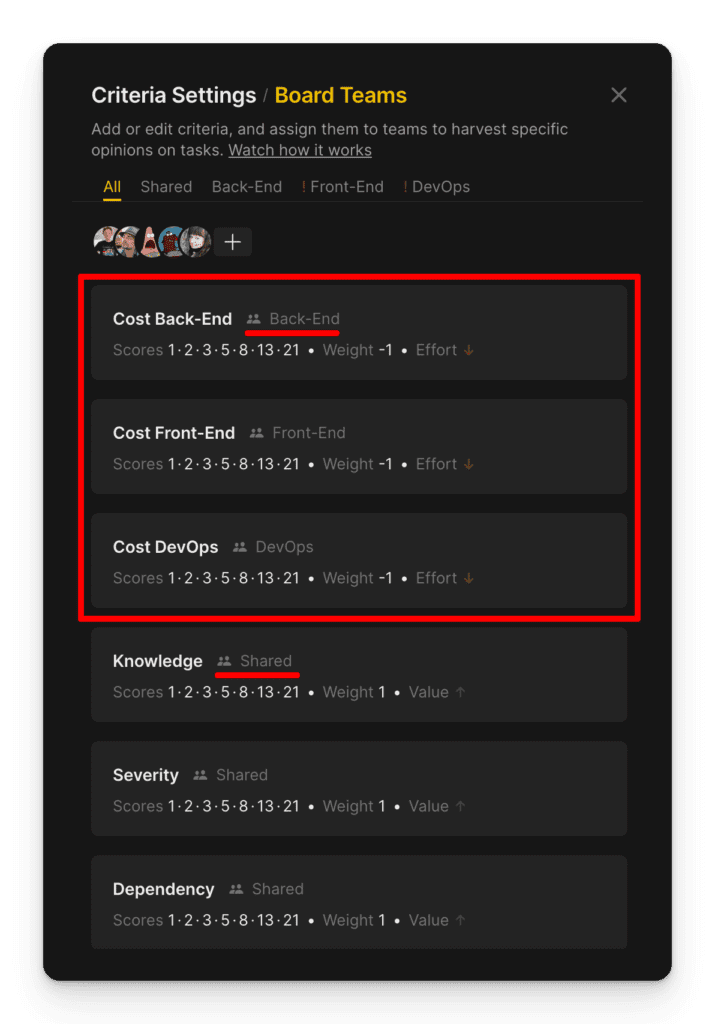
Read more about assigning criteria to team members.
Tip 3: There are no wrong or correct answers in prioritization
After revealing the team’s evaluations, checking if your team is aligned with their estimations is essential. Sometimes, your teammates will have similar assessments, but other times they may have quite controversial numbers. Perhaps some of your teammates know that others don’t, or someone has a good idea for fixing the issue more efficiently.
With the Team Alignment report, you can easily spot the differences in opinions.
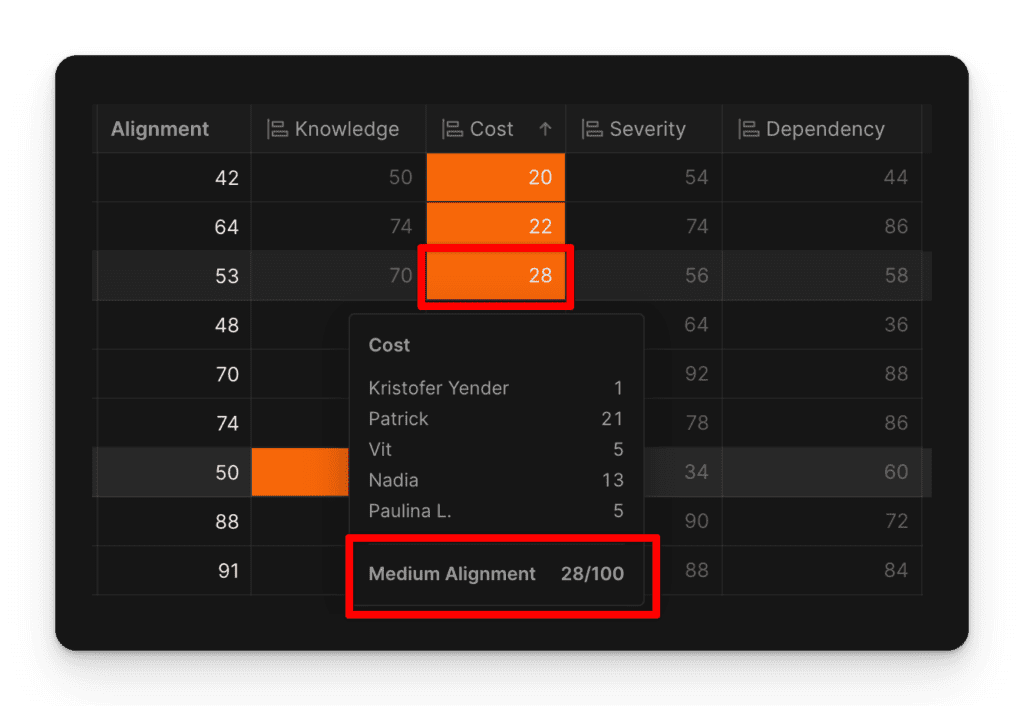
A lower alignment score indicates → a lower projection for issue estimation by your team. This is an excellent point to discuss and re-evaluate.
With the Criteria Alignment section, you don’t need to discuss every combination of issue-criterion-score. The report will highlight the most controversial issues that need to be addressed.
After identifying a misalignment, invite a facilitator or update the final score yourself.

Learn more about how Team Alignment works.
Learn more about how Re-Evaluation works.
Tip 4: Regularly Review and Update the Technical Debt Backlog
Priorities change over time. The market evolves, your infrastructure and development environment changes and your product strategy shifts. If something with high priority stays in your backlog without any movement for a significant amount of time, its priority may need to be questioned.
Regularly review and update the backlog to ensure that technical debt issues are addressed promptly and effectively. This will help you track progress, prioritize issues, and prevent technical debt from accumulating over time.
Ideally, the team would find time to groom and re-prioritize the tech debt backlog. However, this cannot be easy to achieve in real-life situations.
With the “Score Expiration” feature, Ducalis can help your team keep current priorities. This feature resets scores periodically in small chunks, allowing each team member to find time to re-evaluate old issues at their own pace.

Read more about Score Expiration.
Tip 5. Getting buy-in from the Product Manager and Stakeholders
Once you have a prioritized list of issues related to technical debt, you can determine what to do next.
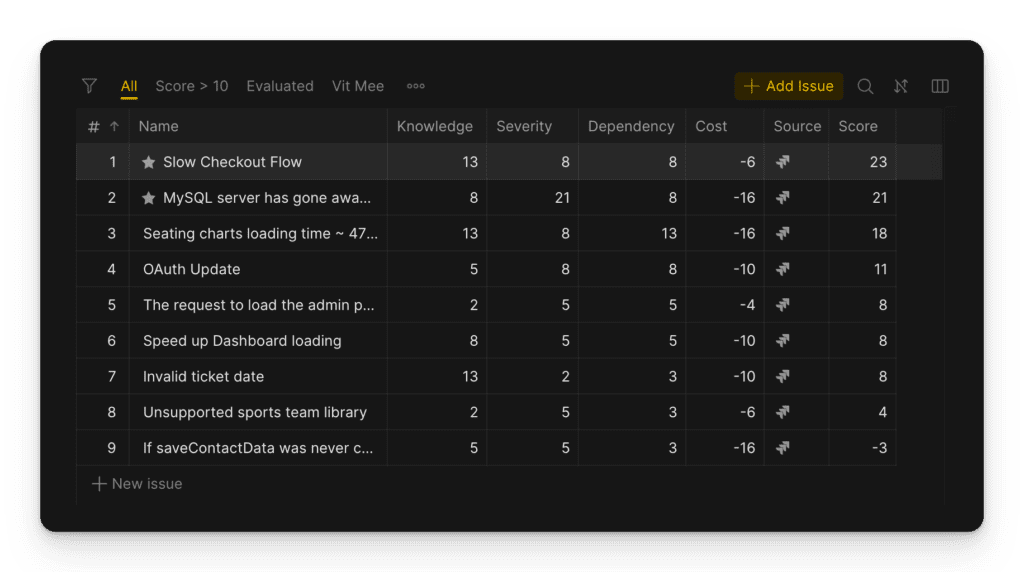
However, the issue is that the technical debt backlog is not receiving enough attention due to the backlogs of your product managers, stakeholders, customers, and complaints.

Include technical debt issues in sprint planning to ensure they are addressed alongside other user stories and tasks. This will help you balance the need to address technical debt with the need to deliver new features and functionality.
Treat the product and engineering backlogs as part of the same backlog.
With the aggregated boards at Ducalis, you can combine multiple backlogs with different prioritization frameworks into one.
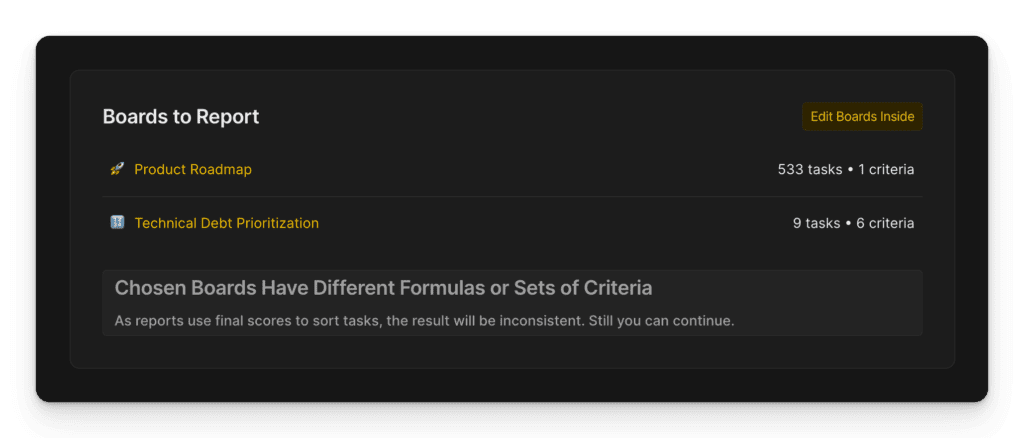
Read more about Aggregated Report board.
Conclusion
Prioritizing technical debt can be challenging, but it is crucial to the success of any development team.
By integrating technical debt prioritization into your sprint planning routine, avoiding bias with estimations, customizing the prioritization framework for your team, regularly reviewing and updating the technical debt backlog, and getting buy-in from the product manager and stakeholders, you can ensure that technical debt is addressed alongside other user stories and tasks and prevent technical debt from accumulating over time.
By following these practical tips, you can effectively manage technical debt and ensure that your development team always operates at its best.
